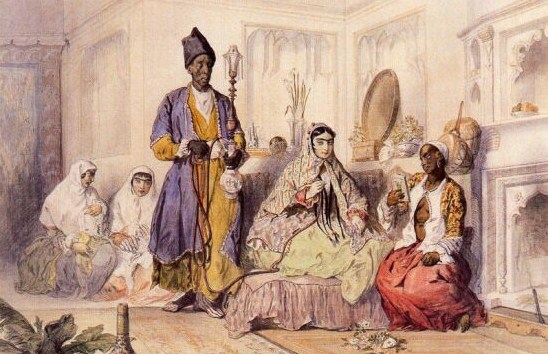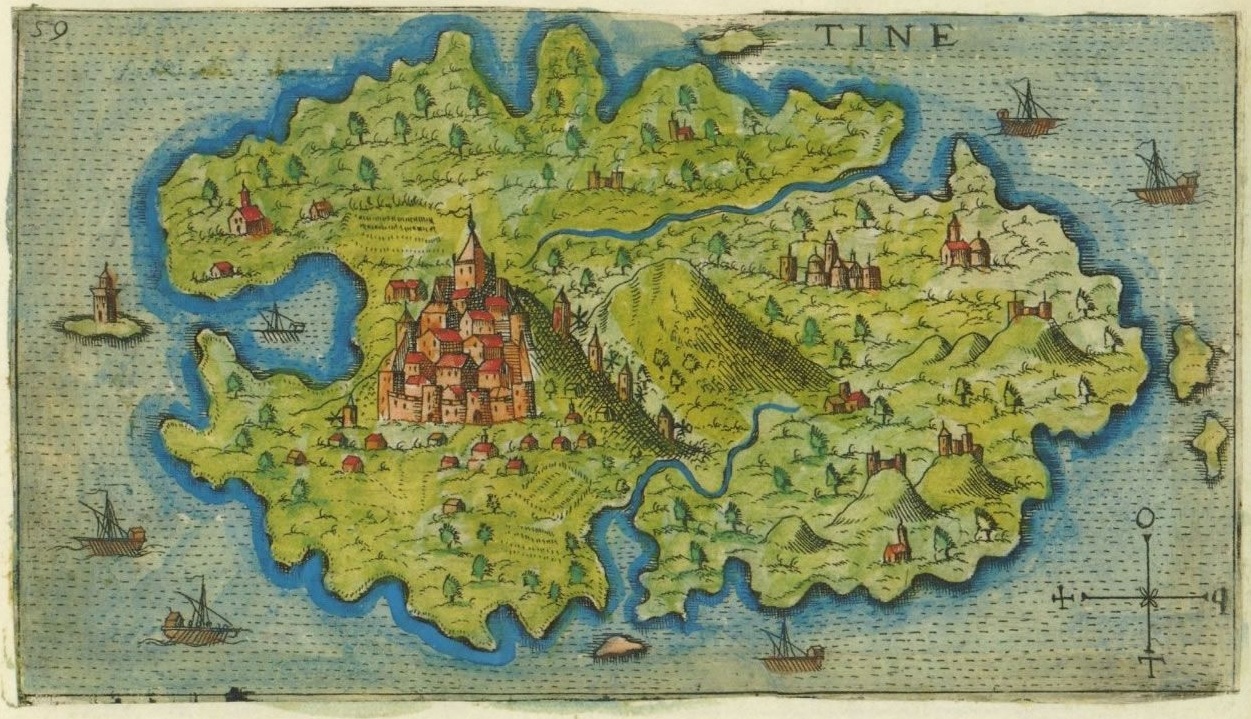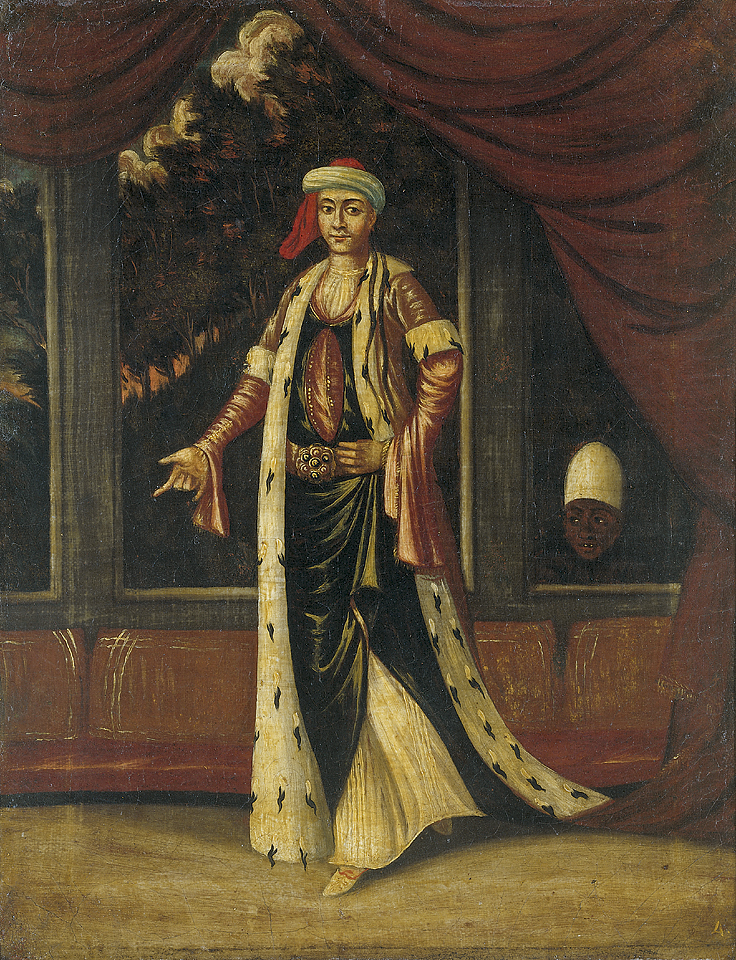|
Ottoman Court
Ottoman court was the culture that evolved around the court of the Ottoman Empire. Ottoman court was held at the Topkapı Palace in Constantinople where the sultan was served by an army of pages and scholars. Some served in the treasury and the armoury, maintaining the sultan's treasures and weapons. There was also a branch of servants that were said to serve the chamber of campaign, i.e. they accompanied the sultan and his court while on campaign. The best of the pages were chosen to serve the sultan in person. One was responsible for the sultan's clothing, one served him with drinks, one carried his weaponry, one helped him mount his horse, one was responsible for making his turban and a barber shaved the sultan every day. At the palace served also a great number of stewards who carried food, water and wood throughout the palace and lit the fireplaces and braziers. Doorkeepers (''Kapıcı'') numbered several hundreds and were responsible for opening the doors throughout the en ... [...More Info...] [...Related Items...] OR: [Wikipedia] [Google] [Baidu] |
Ottoman Empire
The Ottoman Empire (), also called the Turkish Empire, was an empire, imperial realm that controlled much of Southeast Europe, West Asia, and North Africa from the 14th to early 20th centuries; it also controlled parts of southeastern Central Europe, between the early 16th and early 18th centuries. The empire emerged from a Anatolian beyliks, ''beylik'', or principality, founded in northwestern Anatolia in by the Turkoman (ethnonym), Turkoman tribal leader Osman I. His successors Ottoman wars in Europe, conquered much of Anatolia and expanded into the Balkans by the mid-14th century, transforming their petty kingdom into a transcontinental empire. The Ottomans ended the Byzantine Empire with the Fall of Constantinople, conquest of Constantinople in 1453 by Mehmed II. With its capital at History of Istanbul#Ottoman Empire, Constantinople (modern-day Istanbul) and control over a significant portion of the Mediterranean Basin, the Ottoman Empire was at the centre of interacti ... [...More Info...] [...Related Items...] OR: [Wikipedia] [Google] [Baidu] |
Seraglio
A seraglio, serail, seray or saray (from , via Turkish, Italian and French) is a castle, palace or government building which was considered to have particular administrative importance in various parts of the former Ottoman Empire. "The Seraglio" may refer specifically to the Topkapı Palace, the residence of the former Ottoman sultans in Istanbul (known as Constantinople in English at the time of Ottoman rule). The term can also refer to other traditional Turkish palaces (every imperial prince had his own) and other grand houses built around courtyards. Etymology The term ''seraglio'', from Italian, has been used in English since 1581. The Italian Treccani dictionary gives two derivations: # one via or (with the variants ''seraya'' or ''saraya''), which comes from or, per derivation, the enclosed court for the wives and concubines of the harem of a house or palace (see ); # the other — in the sense of enclosure — from Late/, derived from Classical Latin , , whic ... [...More Info...] [...Related Items...] OR: [Wikipedia] [Google] [Baidu] |
Sultan
Sultan (; ', ) is a position with several historical meanings. Originally, it was an Arabic abstract noun meaning "strength", "authority", "rulership", derived from the verbal noun ', meaning "authority" or "power". Later, it came to be used as the title of certain rulers who claimed almost full sovereignty (i.e., not having dependence on any higher ruler) without claiming the overall caliphate, or to refer to a powerful governor of a province within the caliphate. The adjectival form of the word is "sultanic", and the state and territories ruled by a sultan, as well as his office, are referred to as a sultanate ( '. The term is distinct from king ( '), though both refer to a sovereign ruler. The use of "sultan" is restricted to Muslim countries, where the title carries religious significance, contrasting the more secular ''king'', which is used in both Muslim and non-Muslim countries. Brunei, Malaysia and Oman are the only sovereign states which retain the title "sultan" ... [...More Info...] [...Related Items...] OR: [Wikipedia] [Google] [Baidu] |
History Of Concubinage In The Muslim World
Concubinage in the Muslim world was the practice of Muslim men entering into intimate relationships without marriage, with enslaved women, though in rare, exceptional cases, sometimes with free women. It was a common practice in the Ancient Near East for the owners of slaves to have intimate relations with individuals considered their property, and History of the Mediterranean region, Mediterranean societies, and had persisted among the three major Abrahamic religions, with distinct legal differences, since antiquity. Islamic law has traditionalist and modern interpretations, with the former historically allowing men to have sexual relations with their female slaves, while affording female slaves a variety of different rights and privileges in different periods. An example is the status of ''umm al-walad'', which could be conveyed to a concubine who gave birth to a child whose paternity was acknowledged by her owner. In certain times and places, this status prevented a concubi ... [...More Info...] [...Related Items...] OR: [Wikipedia] [Google] [Baidu] |
Kadın (title)
Kadın () was the title given to the imperial consort of the Sultan of the Ottoman Empire towards the beginning of the seventeenth century. The title came into official usage at the end of the century, and remained in usage until the nineteenth and twentieth centuries. Ranks and titles A was a titled consort, and recognised as such by the Sultan. The sultans usually had four s, although they might have more over a lifetime, because from time to time, one would die or be retired to the Old Palace, or were divorced. They were ranked as (senior , senior consort), (second , second consort), (third , third consort), (fourth , fourth consort), and so on, in order of their elevation to that position. The s usually held the prefix titles of ('illustrious', 'highness'), ('the virtuous'), ('honest', 'virtuous'), ('prosperous', 'felicitous'), and ('gracious'), and the suffix titles of ('her ladyship'), and ('highness'). Status and promotion The s were chosen from among the s. The ... [...More Info...] [...Related Items...] OR: [Wikipedia] [Google] [Baidu] |
Haseki Sultan
Haseki Sultan (, ''Ḫāṣekī Sulṭān'' ) was the title used for the chief consort of an Ottoman sultan. In later years, the meaning of the title changed to "imperial consort". Hurrem Sultan, principal consort and legal wife of Suleiman the Magnificent, was the first holder of this title. The title lost its exclusivity under Ibrahim I, who bestowed it upon eight women simultaneously. The title haseki sultan was used until the 17th century. After that, '' kadınefendi'' became the highest ranking title for imperial consorts, although this title was not as prestigious as haseki sultan. Term The word ''haseki'' (خاصکي-خاصگی) comes from the Arabic word ''Khassa'' (خاصه) which is suffixed with the Persian ''gi'' (گی) and means "to attribute something exclusively to". ''Haseki'' is, therefore, one who belongs exclusively to the sultan. Sultan (سلطان) is an Arabic word, that indicates "authority" or "dominion". starting from the 16th century, this title was ... [...More Info...] [...Related Items...] OR: [Wikipedia] [Google] [Baidu] |
Ahmed I
Ahmed I ( '; ; 18 April 1590 – 22 November 1617) was the sultan of the Ottoman Empire from 1603 to 1617. Ahmed's reign is noteworthy for marking the first breach in the Ottoman tradition of royal fratricide; henceforth, Ottoman rulers would no longer systematically execute their brothers upon accession to the throne. He is also well known for his construction of the Blue Mosque, one of the most famous mosques in Turkey. Early life Ahmed was born at the Manisa Palace, Manisa, probably on 18 April 1590, when his father Mehmed was still a prince and the governor of the Sanjak of Manisa. His mother was Handan Sultan. After his grandfather Murad III's death in 1595, his father came to Constantinople and ascended the throne as Sultan Mehmed III. Mehmed ordered the execution of his nineteen half brothers. Ahmed's elder brother Şehzade Mahmud was also executed by his father Mehmed on 7 June 1603, just before Mehmed's own death on 22 December 1603. Mahmud was buried along with hi ... [...More Info...] [...Related Items...] OR: [Wikipedia] [Google] [Baidu] |
Kösem Sultan
Kösem Sultan (; 1589 – 2 September 1651), also known as Mahpeyker Sultan (;), was the Haseki sultan, Haseki Sultan as the chief consort and legal wife of the List of sultans of the Ottoman Empire, Ottoman Sultan Ahmed I, Valide sultan, Valide Sultan as a mother of sultans Murad IV and Ibrahim of the Ottoman Empire, Ibrahim and Büyük Valide Sultan as a grandmother of Sultan Mehmed IV as well as the official Regent of the Ottoman Empire reigning from 1623 to 1632 during the minority of her son Murad IV and her grandson Mehmed IV between 1648 and 1651. She became one of the most powerful and influential women in History of the Ottoman Empire, Ottoman history as well as a central figure during the period known as the Sultanate of Women. Kösem's stature and influence were facilitated by her astute grasp of Ottoman politics and the large number of children she bore. One of her sons and grandson required her regency early in their reigns, and her daughters’ marriages to promi ... [...More Info...] [...Related Items...] OR: [Wikipedia] [Google] [Baidu] |
Haseki Sultan
Haseki Sultan (, ''Ḫāṣekī Sulṭān'' ) was the title used for the chief consort of an Ottoman sultan. In later years, the meaning of the title changed to "imperial consort". Hurrem Sultan, principal consort and legal wife of Suleiman the Magnificent, was the first holder of this title. The title lost its exclusivity under Ibrahim I, who bestowed it upon eight women simultaneously. The title haseki sultan was used until the 17th century. After that, '' kadınefendi'' became the highest ranking title for imperial consorts, although this title was not as prestigious as haseki sultan. Term The word ''haseki'' (خاصکي-خاصگی) comes from the Arabic word ''Khassa'' (خاصه) which is suffixed with the Persian ''gi'' (گی) and means "to attribute something exclusively to". ''Haseki'' is, therefore, one who belongs exclusively to the sultan. Sultan (سلطان) is an Arabic word, that indicates "authority" or "dominion". starting from the 16th century, this title was ... [...More Info...] [...Related Items...] OR: [Wikipedia] [Google] [Baidu] |
Ottoman Imperial Harem
The Imperial Harem () of the Ottoman Empire was the Ottoman sultan's harem – composed of the concubines, wives, servants (both female slaves and eunuchs), female relatives and the sultan's concubines – occupying a secluded portion (seraglio) of the Ottoman imperial household. This institution played an important social function within the Ottoman court, and wielded considerable political authority in Ottoman affairs, especially during the long period known as the Sultanate of Women (approximately 1534 to 1683). Historians claim that the sultan was frequently lobbied by harem members of different ethnic or religious backgrounds to influence the geography of the Ottoman wars of conquest. The utmost authority in the imperial harem, the valide sultan, ruled over the other women in the household. The consorts of the sultan were normally of slave origin, including the valide sultan. The Kizlar Agha (, also known as the "Chief Black Eunuch" because of the Nilotic origin of ... [...More Info...] [...Related Items...] OR: [Wikipedia] [Google] [Baidu] |
Valide Sultan
Valide Sultan (, lit. "Sultana mother") was the title held by the mother of a ruling sultan of the Ottoman Empire. The Ottomans first formally used the title in the 16th century as an epithet of Hafsa Sultan (died 1534), mother of Sultan Suleiman the Magnificent , Suleyman I (), superseding the previous epithets of Valide Hatun (lady mother), ''Mahd-i Ulya (other), mehd-i ulya'' ("cradle of the great"). or "the nacre of the pearl of the sultanate".Leslie Peirce, Peirce, Leslie P., ''The Imperial Harem: Women and Sovereignty in the Ottoman Empire'', Oxford University Press, 1993, (paperback) Normally, the living mother of a reigning sultan held this title. Those mothers who died before their sons' accession to the throne never received the title of . In special cases sisters, grandmothers and stepmothers of a reigning sultan assumed the title and/or the functions . Term The word () literally means 'mother' in Ottoman Turkish, from Arabic . The Turkish phonology, Tu ... [...More Info...] [...Related Items...] OR: [Wikipedia] [Google] [Baidu] |









